Top Brand by
Branding design
The branding design of POROROCA solves
the challenges of recognition
and differentiation.
Half of Japanese companies have issues with brand recognition and differentiation. POROROCA has a unique approach to address these corporate challenges, focusing on preserving brand individuality while solving problems through branding design.
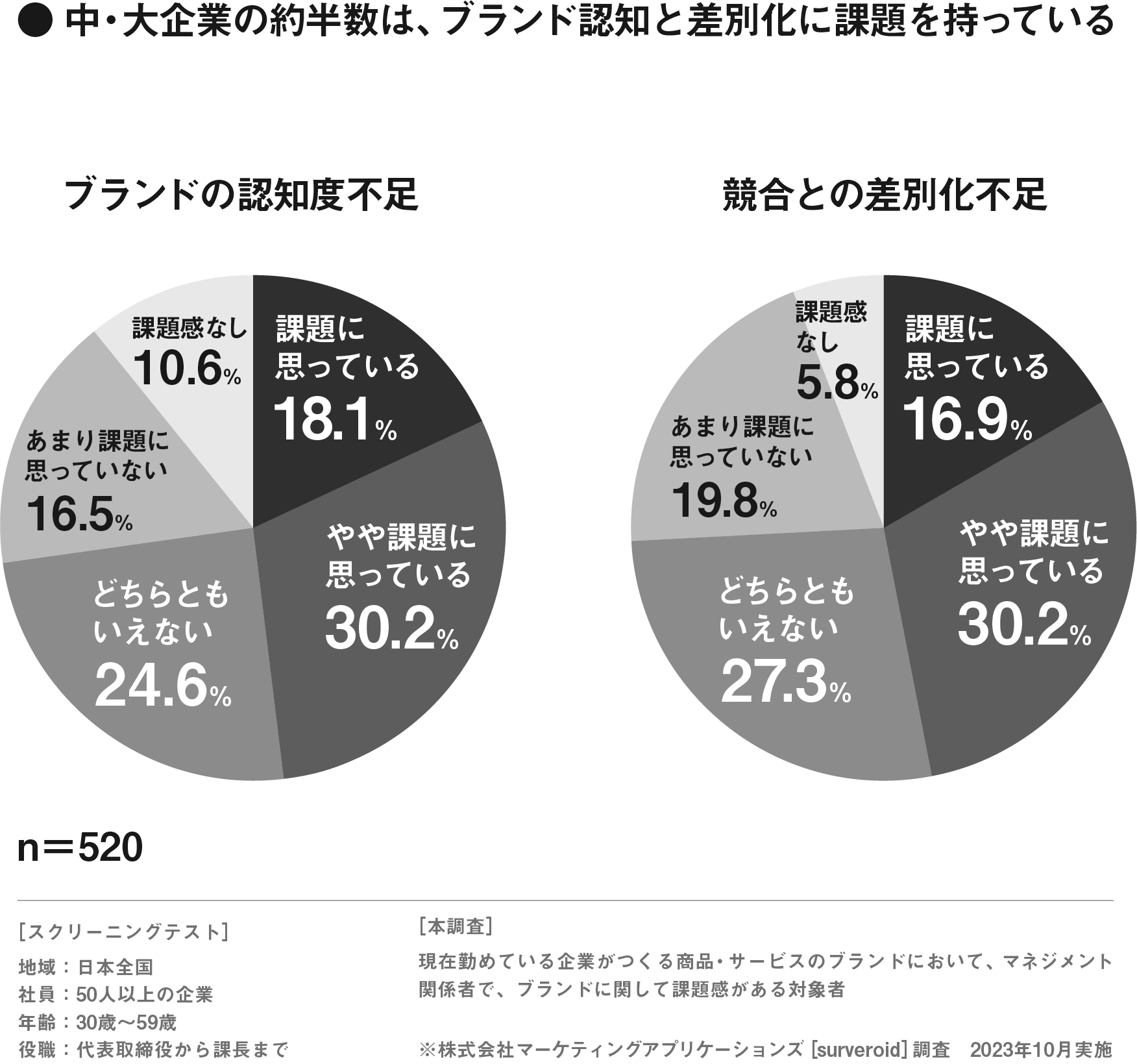
The Top 10 Main Reasons for Lack of Brand Awareness
Key to Company Growth:
What are the factors causing the lack of brand recognition faced by over half of Japanese companies?
In all profit-making ventures, being 'known' is a prerequisite to 'selling', and the approach to this greatly influences the success of the business. Various issues can be considered for the recognition problems faced by half of Japan's medium and large enterprises, and the causes can be complex and overlapping in some cases. When recognition does not increase, it's essential to start by clarifying these elusive reasons. This affects the countermeasures and, consequently, impacts the performance.
Misunderstood Recognition
The situation where a brand's intended message does not accurately reach consumers, giving them a wrong impression, is a serious issue in corporate branding design. Such situations arise when consumers do not correctly understand unclear brand messages, confusing marketing campaigns, or graphic visuals like logotypes and packaging that do not convey the brand's values. This results in decreased brand credibility, confusion in market positioning, and a negative impact on brand awareness. It's crucial for companies to collaborate with branding designers to adopt an approach that clearly communicates the brand's appeal and message. By consistently conveying the brand's message across elements like websites, logos, marks, and packaging, consumer confusion can be avoided. Employing designs that emphasize the brand's uniqueness and message, inspired by past successful examples, is also effective. Consistent expression of these elements in the company's website and marketing materials results in improved brand recognition and accurate positioning.
● Confusion with Competitors
A brand being indistinguishable from its competitors indicates a lack of uniqueness in the market. This issue can arise, for example, when a brand's logo, symbol, or website lacks clear uniqueness or distinguishing features. It's also a concern when the market is saturated with similar products or services. As a result, consumers find it difficult to differentiate between brands, making it challenging to build loyalty or affinity towards a specific brand. For corporations and other companies, it's vital to emphasize the brand's appeal and uniqueness through branding elements like websites, logos, packaging, and marks. These companies should adopt approaches and strategies that highlight their brand's uniqueness, drawing on case studies. An effective branding strategy should be reflected in the company's site and marketing materials, conveying the brand's appeal to consumers and enhancing its distinctiveness in the market.
● Inconsistent Branding Design
For companies, conveying inconsistent brand messages and visuals across different platforms and channels is a significant issue. This inconsistency can lead to consumer confusion and negatively impact brand credibility and awareness. Adopting a consistent branding strategy is crucial, including unifying graphic elements like logos, marks, packaging, and visual elements in web branding design. If these elements are consistent, they can communicate the brand's appeal, contributing to accurate market positioning and improved brand awareness.
● Unclear Customer Needs/h4>
For companies, not accurately understanding consumer needs and expectations is a significant challenge. This ambiguity can lead to offering products or services that do not align with the target audience, resulting in marketing strategies that do not meet market demands. As a result, brand awareness and market acceptance may decrease. To address this issue, marketing teams should collaborate with designers to adopt an approach that provides products and services in line with consumer needs and expectations. Visual elements like logos, marks, and packaging should be designed to appeal to the target audience. Additionally, a company's website and marketing materials need to accurately convey the brand's appeal and provide information that meets consumer needs. Referencing successful cases and appropriately adjusting the brand's message and visual identity is essential for improving market recognition and acceptance.
● Lack of Uniqueness
The absence of clear, distinguishing features or identity in a brand, making it indistinct from competitors, is a serious issue for companies. This deficiency makes it challenging to establish a unique position in the market and create a lasting impression on consumers, leading to decreased brand awareness and appeal. To address this, it is vital for companies to collaborate with designers to establish uniqueness in branding design. Designing visual elements like logos, marks, and packaging to reflect the brand's uniqueness, and demonstrating this individuality through the company's website and site content, are key to increasing market recognition and attracting consumer interest.
● Inadequate Marketing
When a company launches a brand without an integrated marketing strategy, insufficient investment in marketing channels, or an inability to adapt to market trends and changes in consumer behavior, it becomes challenging to increase market recognition. This is a significant issue for companies from a brand awareness perspective. Collaboration between designers and companies is essential to create attractive logos, marks, and package designs, and to deploy these effectively on websites and other platforms. While referencing successful cases, adopting branding design approaches and strategies that align with market trends and consumer behavior, and investing sufficiently in marketing channels are crucial steps towards enhancing brand recognition.
● Geographical Limitations
Even if a brand is recognized within the same commercial area, its recognition in other regions is likely to vary. This is because branding changes according to customer needs and culture in each region. If a company does not provide products or services specialized for a region, or fails to implement branding design measures that cater to the unique culture and needs of the area, it becomes difficult to achieve the desired level of recognition.
● Low Visibility on SNS and Online
This is a result of insufficient digital marketing. Reasons for low visibility on social media and online include the lack of an effective digital marketing strategy, insufficient activity on SNS platforms, inadequate SEO (Search Engine Optimization) for websites, or insufficient investment in online advertising.
● Budget Constraints
A lack of funds for advertising and marketing activities can be equated to an inability to implement measures to increase recognition. It becomes difficult to carry out effective marketing activities, advertising campaigns, product development, or market research, all of which are necessary for improving recognition.
● Lack of Customer Engagement
Low customer engagement can lead to decreased brand awareness and loyalty, impacting the brand's growth. Branding is the process of shaping a brand's identity and strengthening its relationship with the target audience. Often, a lack of customer engagement stems from insufficient communication with the target audience and a lack of appealing content or campaigns.
● Cultural Barriers
If there's a lack of deep understanding of specific cultural or regional values, customs, language, and consumer behavior, a brand's message may not be effectively communicated, hindering recognition. This becomes especially important for companies venturing into international markets.
Five Approaches to Improve Brand Recognition through Branding Design
Customer Perspective:
Improving Recognition from Needs and Uniqueness
Examples of Branding Design
In the context of the above recognition issues, there are five problems where branding design directly involves and leads to a solution. For each problem, I will explain POROROCA's considerations and approach.
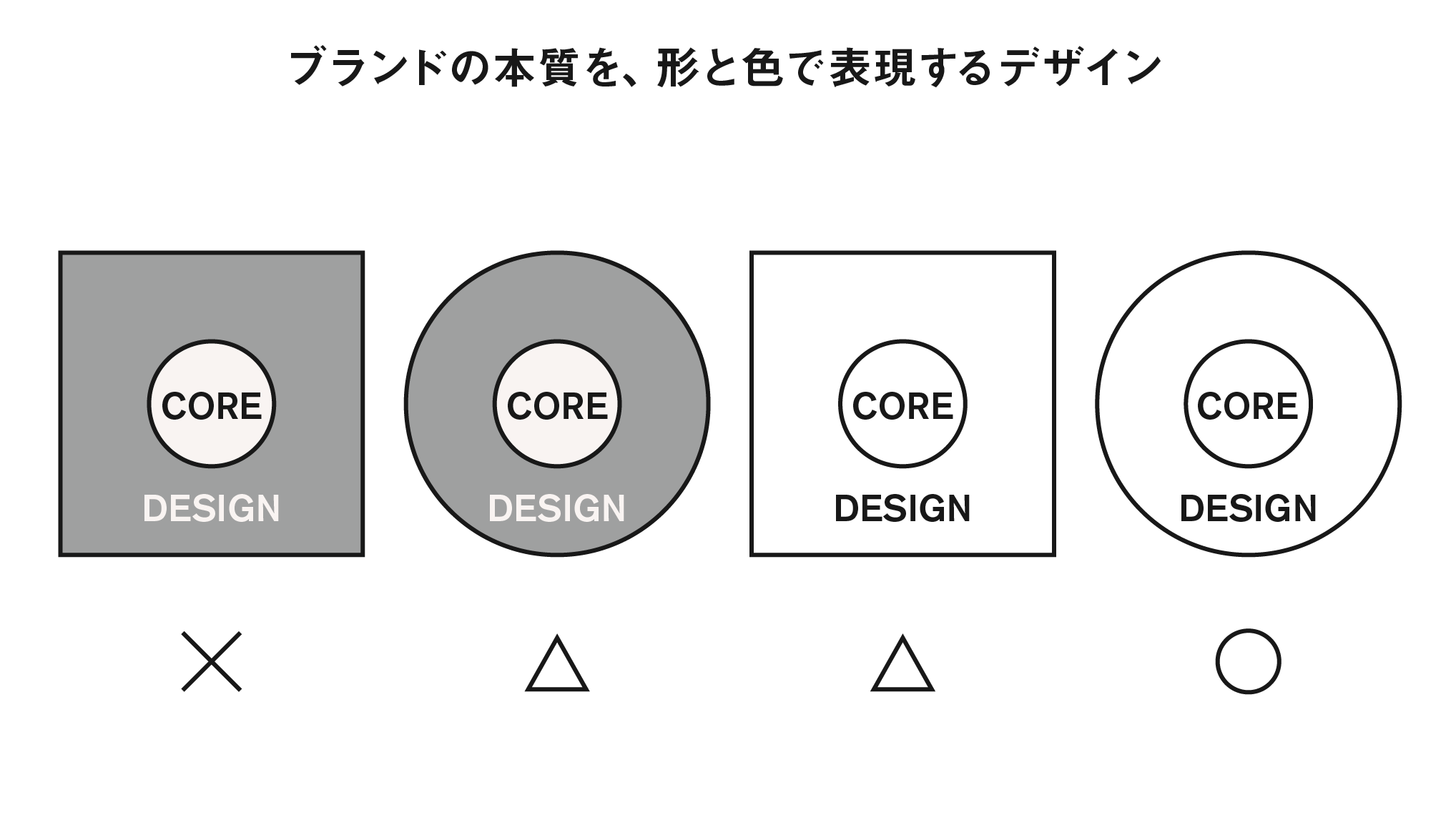
[Problem 1]Misunderstood Recognition
The way a brand image is perceived can change with branding design. Even with the same concept, depending on the design, it can be conveyed as essential information or, conversely, lead to misunderstandings. To prevent misunderstandings, designers need a deep understanding of the brand concept and high skills in translating it into shapes and colors. This enables designers to transform it into brand information that captures the essence.
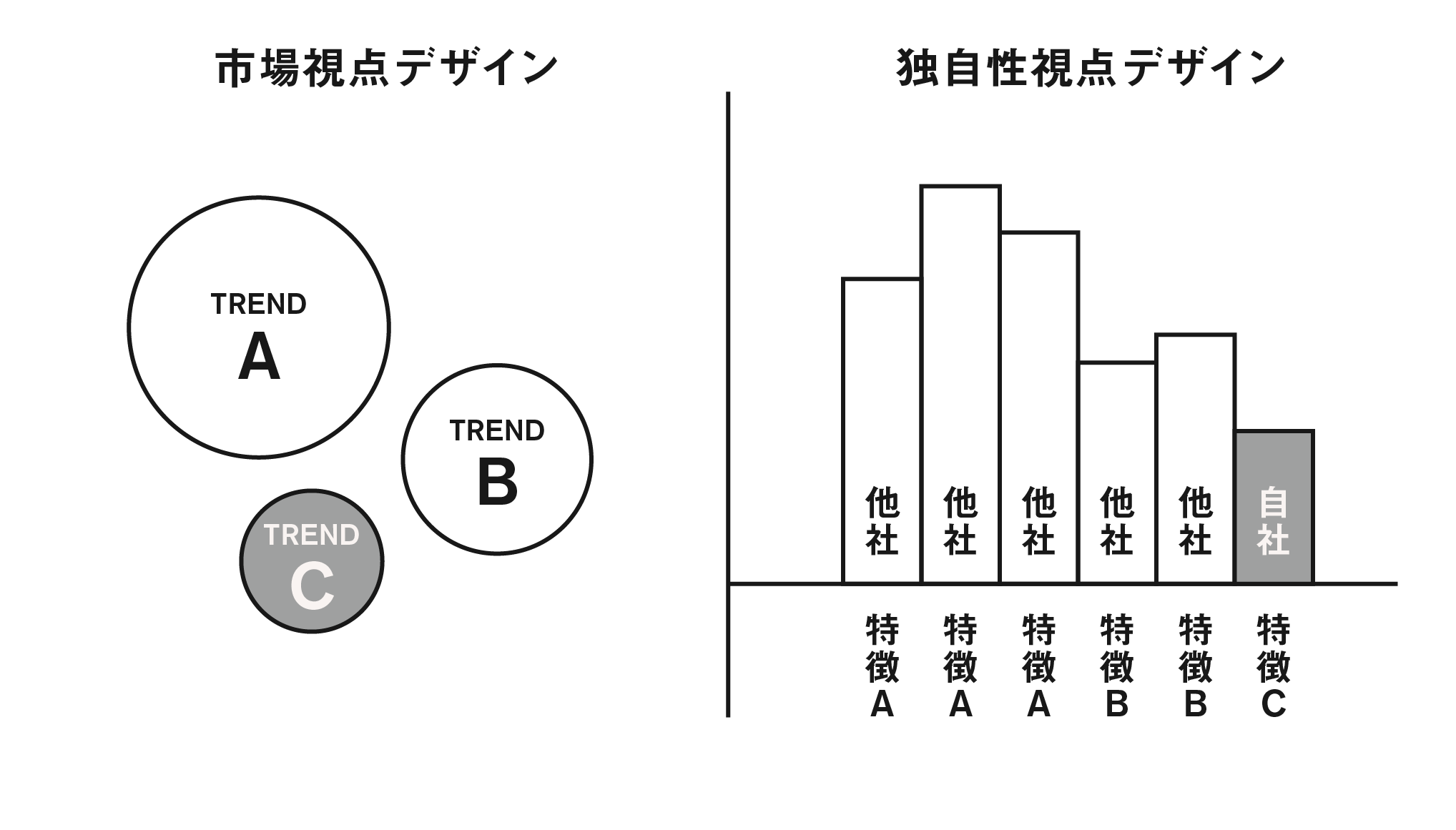
[Problem 2]Confusion with Competitors
When a brand image is similar to that of competitors, differentiation is necessary. Differentiation is relative and refers to expressing the unique characteristics of a company in comparison to others. When differentiation is achieved, brand recognition tends to improve. To tackle this issue, it is important to identify a form that makes one's brand stand out from both specific perspectives on related competitor brands and products, and a broader market perspective. Differentiation can be realized through such approaches.
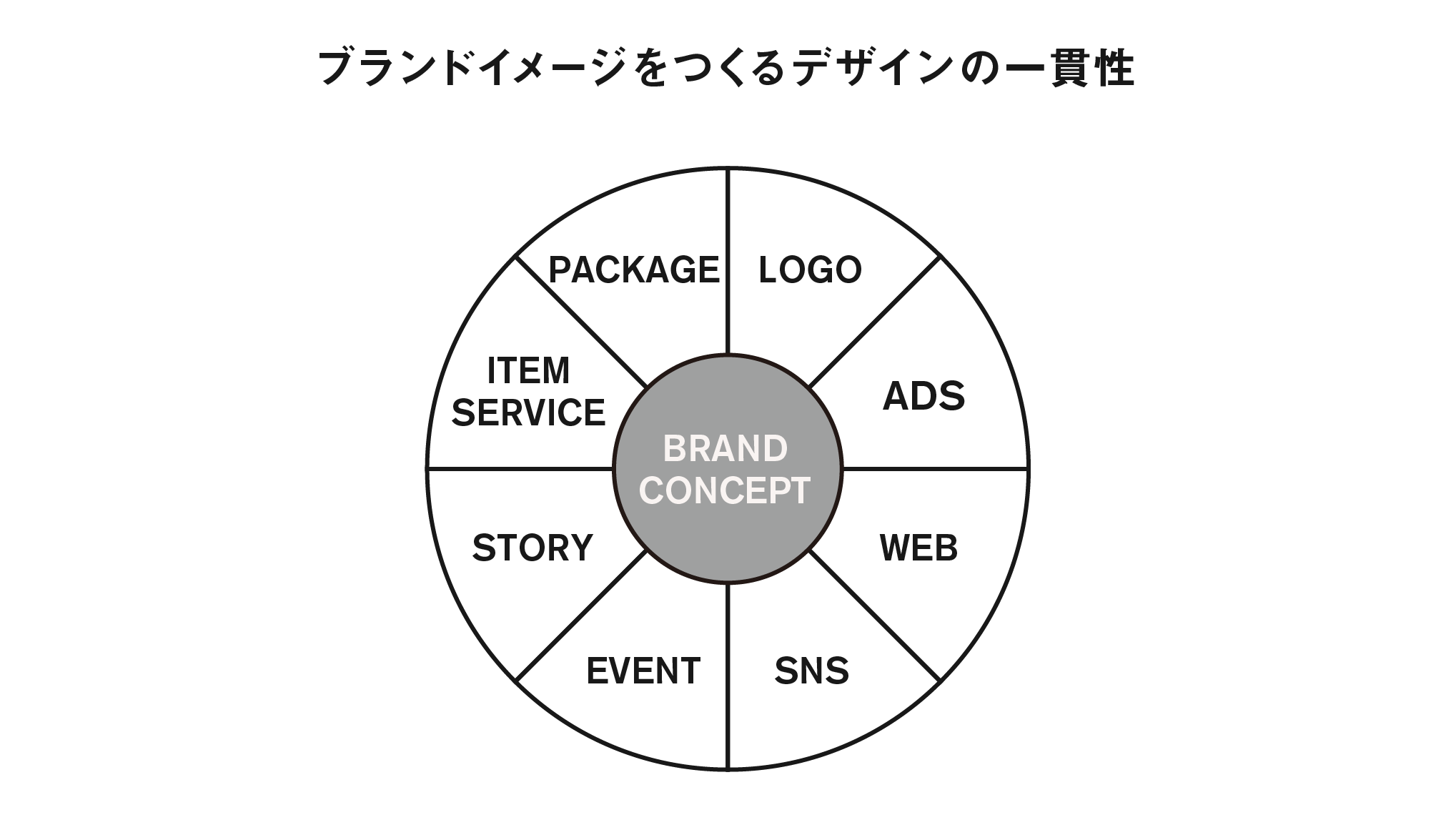
[Problem 3]Inconsistent Branding
Brand information is disseminated through various media. If the brand image conveyed to customers is not unified across these platforms, the efficiency of information transmission decreases, making it difficult to improve recognition. Therefore, designers and management need to pay attention to the methods and content of branding design deployment to maintain consistency in the brand image.
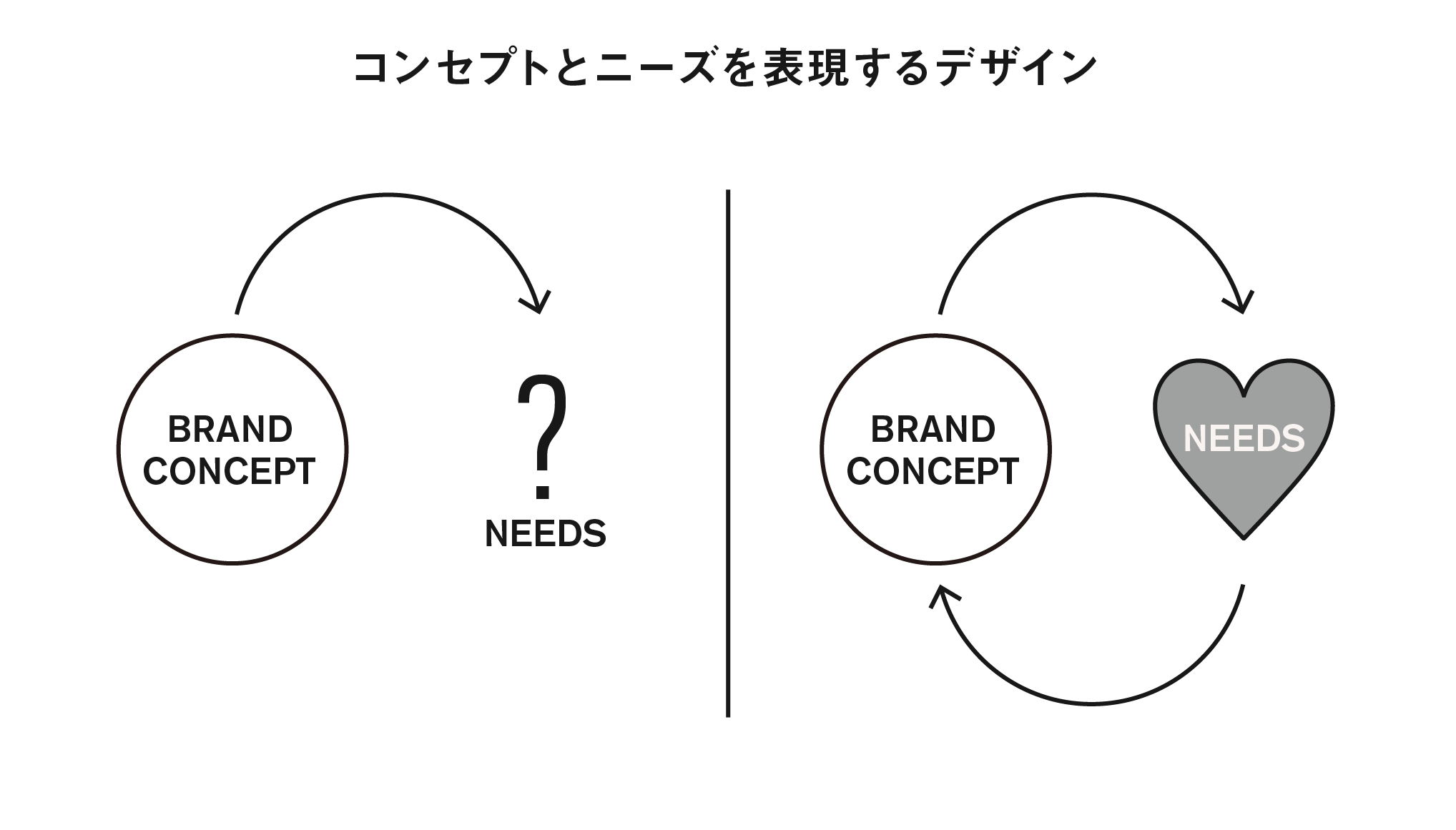
[Problem 4]Unclear Customer Needs
When customer needs are not understood, branding tends to become misguided. This is because imposing a company's unilateral brand values does not necessarily align with customer needs. By grasping customer needs in advance and clarifying the concept, branding design can more easily convey the essence of the brand, consequently leading to easier improvement in recognition.
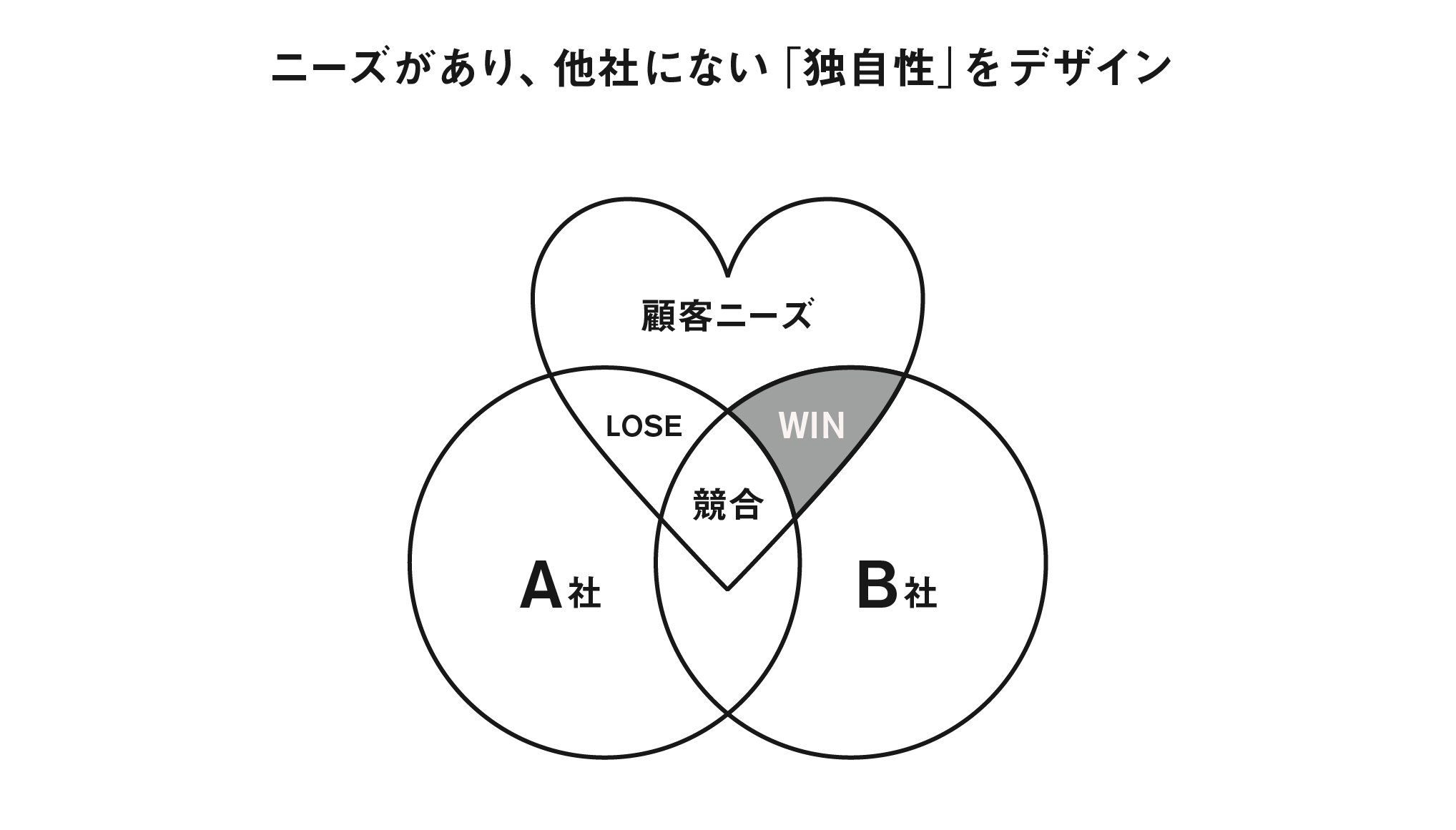
[Problem 5]Lack of Uniqueness
The uniqueness of a brand refers to characteristics that meet needs and are not found in other companies. Even if a feature is prominent, it may not stand out in a market with many competitors. Also, features that do not meet any needs, even if distinctive, tend to be a waste of resources. In branding design, such clear and relatively prominent uniqueness allows for the creation of a stronger design image and can elevate brand recognition.
Branding Design Collaboratively Worked on by Management
and Designers
Management Perspective:
Understanding the Role of Branding Design and
Adopting Strategies for Improving Brand Recognition
While management does not directly involve themselves in the design work for enhancing brand recognition, they play a crucial role in guiding the direction, exchanging opinions, and providing necessary support for the success of branding design. In this process, the success of high-quality branding design that dramatically increases recognition significantly depends on the management's choice of branding designers and the method of collaboration. Corporations adopting such collaboration choose the most suitable design approaches for improving recognition.
The way to collaborate comes from here → Total Branding Thinking (TBT)
● Establishing a Long-term Brand Vision
To succeed in branding design, it is first necessary to clarify the brand's vision. This involves setting the company's long-term direction and formulating the core concepts, values, and identity of the brand. Branding is about forming the foundation of such a brand and visually expressing it through design.
● Clarifying Branding Issues
Management needs to understand and share current challenges and weaknesses in branding with brand management stakeholders. This involves conducting surveys on existing customer brand awareness, analyzing market trends, competitor analysis, and surveys to deepen understanding of customer needs, which can be effective depending on the problem.
● Breaking Free from the Bias of Underestimating Design
Few management teams understand the significant impact branding design can have on issues of recognition and differentiation. Therefore, it's important to first comprehend the substantial value that brand image brings to customers and recognize that control over it is only possible through design. Investment in design should not be seen merely as a cost but as a long-term asset. Appropriate budgeting and resource allocation support effective branding activities and greatly contribute to improving recognition.
● Strong Partnership with Branding Designers
The brand image conveyed to customers is the result of a strong relationship between the management and branding designers or their specialized teams. In this partnership, sharing the brand's challenges and vision is essential. Open communication and mutual understanding between management and designers are key to the success of building the brand image.
● System Allowing Free Exchange of Opinions
A single idea can sometimes revolutionize a company. To foster creativity and elicit innovative ideas, it is important to create a space for open and free exchange of opinions. Management must establish an organizational structure that encourages collaboration and diversity of opinions among teams. This structure is a flat environment where ideas are collected and considered, not only from designers but across all positions and ranks within the company.
● Unifying Branding Concept Across the Entire Organization
Branding should permeate not only externally but also internally throughout the organization. A brand with consistency both inside and outside the organization is strong, and its ability to disseminate information and its reach expands. To achieve this, it is important to first share the brand concept among different departments and teams within the company. Additionally, it is necessary to create tools in branding design to facilitate this sharing.
● Evaluating and Adjusting Based on Market Feedback to Design
Regularly assessing the image effects produced by branding design and analyzing market reactions and customer feedback is important. This allows for consideration of the necessary direction for the next strategy or approach. Through the analysis of this feedback and adjustment of direction, it becomes possible to flexibly respond to the rapidly changing market environment and achieve sustainable growth.
